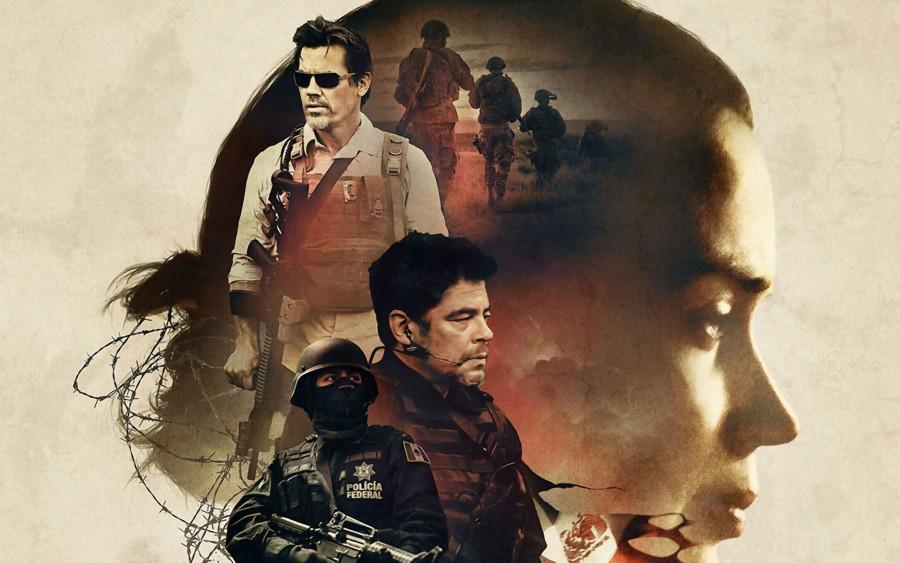Although it’s been out for over a week, “Sicario” continues to conjure up a roiling mix of opinion and emotion. The star-studded film has been the matter of conversation from Ciudad Juárez Mayor Enrique Serrano, asking Juarenses to refrain from viewing the film, to exchange dialogue amongst UTEP students and professors. It isn’t hard to understand why. The film largely portrays local unexposed occurrences, and portrays it very vividly on the big screen. If you haven’t been paying attention to local news and print publications, “Sicario” frankly depicts the inglorious drug war that has been happening in Mexico.
As a Hollywood production, “Sicario” depends on violence to convey its message. Although, not far-fetched, the film makes the crude barbarity that the Mexican cartels have spurred, not only on the streets of Juárez, but also throughout the entire country, a cinematic thrill. The film depicts a version of the border region that is quite dated. In actuality, the violence has dramatically dropped, but you can’t say that it has ceased. “Sicario” takes place in a reality that was roughly five years ago, which is exactly why it has outraged many locals because it falsely portrays Juárez to a large audience.
The film is inundated with gore, but it is necessary. We, as residents of the border between Mexico and the United States, know how gruesome the drug war has been. This film is intended for a larger audience, who needs a visualization of the violence. French director Denis Villeneuve utilizes this visual aesthetic throughout the entire film, grabbing the audience by being as crass as possible. The bleakness is what makes the film as enticing as it is.
Emily Blunt, known for her more comedic roles, delivers a brilliant performance here. Although starring beside equally famed actors Benicio Del Toro and Josh Brolin, it is Blunt who drives “Sicario.”
Blunt plays Kate Macer, an FBI agent who specializes in hostage safety. She is an idealist, following proper professional protocol. Matt Graver, played by Brolin, enlists her on the vague mission involving Mexican drug cartels. Both characters are juxtaposed throughout the film with the intention of protecting the nation from the cartels, not wanting the violence to spill unto U.S. territory. The one thing that “Sicario” lacks is direction. The film keeps the audience in murky waters throughout most of it’s two-hour run. The true intentions of the mission that takes several members of American government agencies into dangerous Mexican territories are not reveled until very late into the film. This is when “Sicario” starts making its fictional actuality very apparent.
The film begins with a home raid in the outskirts of Phoenix. Here, the FBI team finds a multitude of dead bodies hidden behind the walls of a home. Indeed, these are not hostages that Kate had plans to find. Instead, they find dead victims that were in held in the chokehold that the Mexican cartels have on their affiliates. This border crossing between U.S. soil and the violent reality that the drug war presents is highly represented throughout the film. There are bodies dangling from the bridge when the agents cross into Juárez to transport one of the cartel bosses. They also encounter crossfire between gangs at the bridge. A hit man is hired from within the Phoenix police department to obtain information from Blunt’s character. The brutal actuality of what has been occurring on the border is sufficiently executed.
What “Sicario” doesn’t deliver is the opposite side of the coin. We might be exposed to the violence in Mexico, which is easily comprehended by those of us living on the border, but what it doesn’t do is show how this kind of reality has become too real for Mexicans. In a nation engulfed in corruption and lack of government direction, it becomes natural for it’s people to live with harsh realities as a norm. We, the audience, are only taken into Mexican territory a handful of times, making the plot almost entirely developed on U.S. terms, but that is not the nature of the Mexico’s drug war. One must understand the nature of living and operating in Mexico in order to thoroughly comprehend what the drug war entails.
Benecio Del Toro’s character, Alejandro, finishes off the film by single-handily taking down the principal cartel boss. Understandably, the film needs a heroic character, and judging by Kate’s vulnerability and naïve demeanor, it isn’t going to be her. But Del Toro’s character is driven by revenge, and there is almost no emotional aesthetic displayed throughout the film until then. It could have possibly been more realistic to finish the film with a procedural militant group getting to the lead drug lord.
“Sicario” has received many good reviews, but has also upset many by its depiction of the borderland. As far as the violent nature of the drug war, the film delivers excessively. From all the Hollywood-produced films that have aimed to showcase the war on drugs such as “Traffic” and “Savages,” this is the film that does it more accurately. Keep in mind that this is Hollywood while watching the movie and keep in mind that this is an American-produced film. Also, keep in mind that there were actually many lives lost in Mexico while they were making of this film.
Jose Soto may be reached at [email protected].












